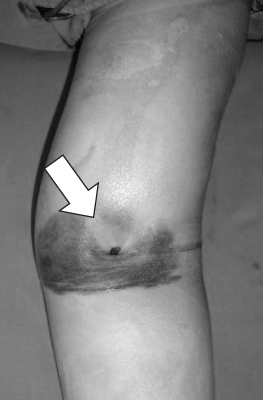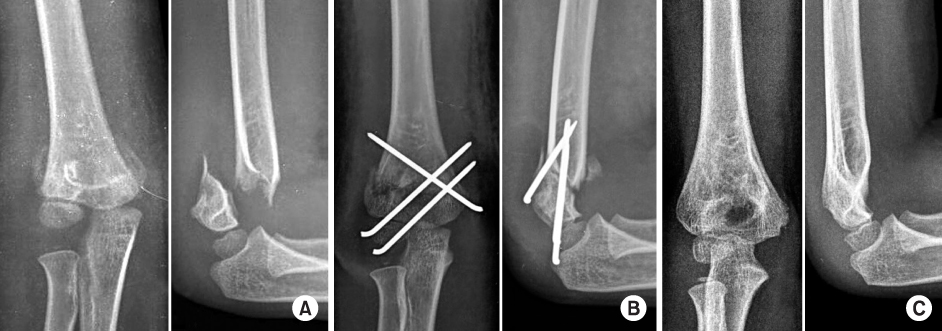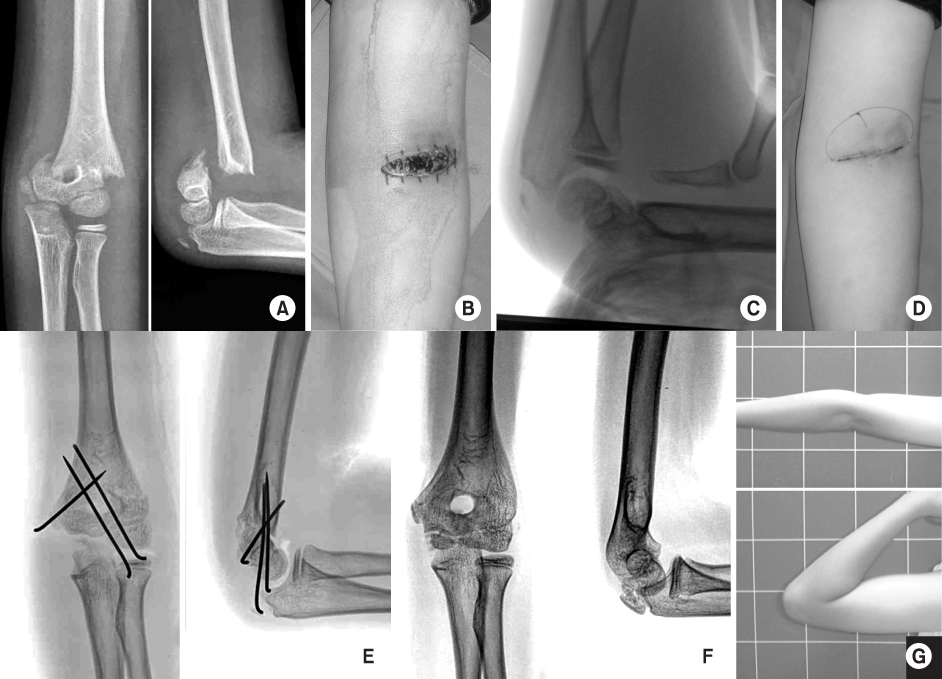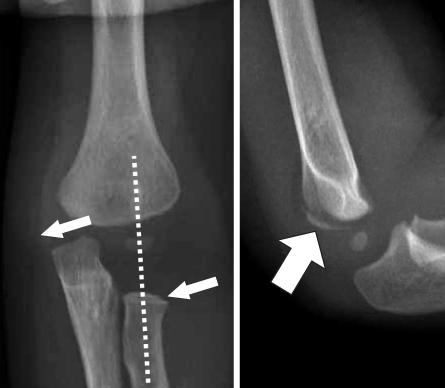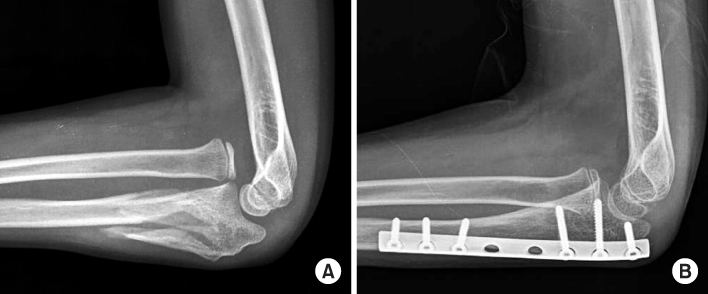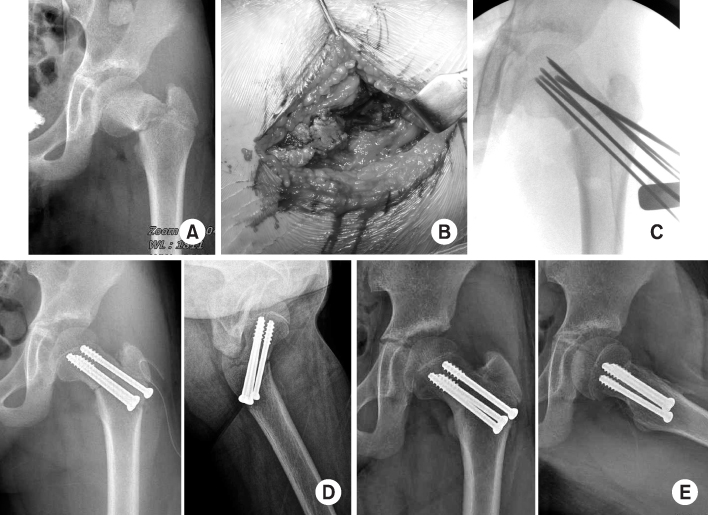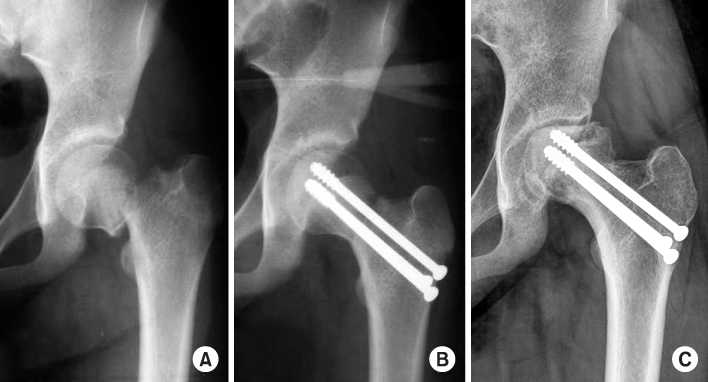J Korean Fract Soc.
2015 Apr;28(2):146-154. 10.12671/jkfs.2015.28.2.146.
Surgical Timing of Treating Pediatric Trauma: Urgencies/Emergencies
- Affiliations
-
- 1Department of Orthopaedic Surgery, Kyungpook National University School of Medicine, Daegu, Korea. cwoh@knu.ac.kr
- KMID: 2044023
- DOI: http://doi.org/10.12671/jkfs.2015.28.2.146
Abstract
- No abstract available.
Figure
Reference
-
1. Lee SC, Shim JS. Recent trends in treatment of supracondylar fracture of distal humerus in children. J Korean Fract Soc. 2012; 25:82–93.
Article2. Skaggs DL, Mirzayan R. The posterior fat pad sign in association with occult fracture of the elbow in children. J Bone Joint Surg Am. 1999; 81:1429–1433.
Article3. Shim JS, Lee YS. Treatment of completely displaced supracondylar fracture of the humerus in children by cross-fixation with three Kirschner wires. J Pediatr Orthop. 2002; 22:12–16.
Article4. Gupta N, Kay RM, Leitch K, Femino JD, Tolo VT, Skaggs DL. Effect of surgical delay on perioperative complications and need for open reduction in supracondylar humerus fractures in children. J Pediatr Orthop. 2004; 24:245–248.
Article5. Mehlman CT, Strub WM, Roy DR, Wall EJ, Crawford AH. The effect of surgical timing on the perioperative complications of treatment of supracondylar humeral fractures in children. J Bone Joint Surg Am. 2001; 83:323–327.
Article6. Ramachandran M, Skaggs DL, Crawford HA, et al. Delaying treatment of supracondylar fractures in children: has the pendulum swung too far? J Bone Joint Surg Br. 2008; 90:1228–1233.7. Oh CW, Park BC, Kim PT, Park IH, Kyung HS, Ihn JC. Completely displaced supracondylar humerus fractures in children: results of open reduction versus closed reduction. J Orthop Sci. 2003; 8:137–141.
Article8. Suh SW, Oh CW, Shingade VU, et al. Minimally invasive surgical techniques for irreducible supracondylar fractures of the humerus in children. Acta Orthop. 2005; 76:862–866.
Article9. Oh CW, Park BC, Ihn JC, Kyung HS. Fracture separation of the distal humeral epiphysis in children younger than three years old. J Pediatr Orthop. 2000; 20:173–176.
Article10. Song KS, Kang CH, Min BW, Bae KC, Cho CH, Lee JH. Closed reduction and internal fixation of displaced unstable lateral condylar fractures of the humerus in children. J Bone Joint Surg Am. 2008; 90:2673–2681.
Article11. Song KS, Shin YW, Oh CW, Bae KC, Cho CH. Closed reduction and internal fixation of completely displaced and rotated lateral condyle fractures of the humerus in children. J Orthop Trauma. 2010; 24:434–438.
Article12. Song KS, Ramnani K, Bae KC, Cho CH, Lee KJ, Son ES. Indirect reduction of the radial head in children with chronic Monteggia lesions. J Orthop Trauma. 2012; 26:597–601.
Article13. Jeong C, Park I. Treatment of neglected monteggia fracture in children. J Korean Fract Soc. 2012; 25:233–239.
Article14. Song KS. Displaced fracture of the femoral neck in children: open versus closed reduction. J Bone Joint Surg Br. 2010; 92:1148–1151.15. Dahl WJ, Silva S, Vanderhave KL. Distal femoral physeal fixation: are smooth pins really safe? J Pediatr Orthop. 2014; 34:134–138.
- Full Text Links
- Actions
-
Cited
- CITED
-
- Close
- Share
- Similar articles
-
- Surgical Timing of Treating Adult Trauma: Emergency/Urgency
- Hypertensive emergencies: a new clinical approach
- Pediatric Inguinal Hernia Surgery: Recent Strategies and Techniques
- Spleen-Preserving Distal Pancreatectomy for Blunt Pancreatic Trauma in a Pediatric Patient
- Proposal for stabilization of regional trauma centers in Korea

